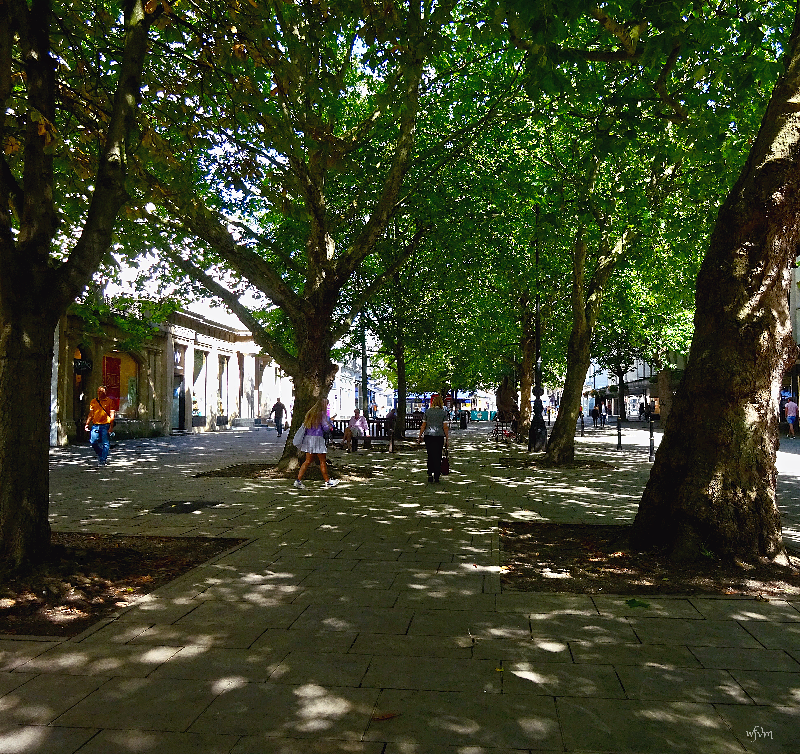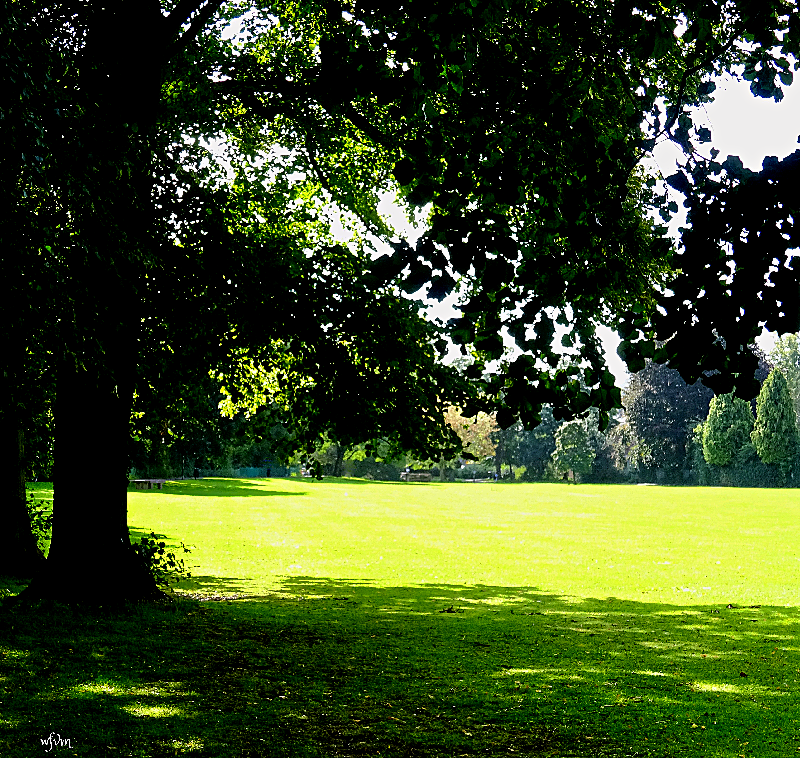As we left the house I took a quick photo of the Anemone hupehensis - Japanese anemone, before they finally go beyond their best. Currently they are a riot of pretty pink, but they do need curbing, otherwise they will take over any areas where they are planted.
We have now travelled a few miles along the road and arrived in Cirencester - Roman town Corinium. The parish church of St. John the Baptist dominates the centre of the town and overlooks the town's Market Place. A charter market, originally founded during the Roman period, and mentioned in the 1086 Domesday Book.
Around the corner we walk past a very high wall shielding a 40ft Yew hedge which in turn hides a stately home. Planted in 1720, the hedge is now exactly 300 years old and reputed to be the tallest Yew hedge in the world.
It is very unusual to have a stately home in the middle of a town, but as you can see, it is totally hidden from our view.
However, a birds eye view from the church tower reveals a semi circular Yew hedge screening the house. It also shows the walk (on the right) that we are about to take over the Estate. It is a walk that the 9th Earl and the Countess of Bathurst generously open to the public from 8.00am until 5.00pm on a daily basis.
The road that leads up to the park is called Cecily Hill. It has some fine Cotswold stone properties showing a variety of styles that alternate between local vernacular cottages to imposing villas. The road is named after an ancient chapel that once occupied the site dedicated to St. Cecilia.
A terrace of ten cottages bears a stone plaque and is a reminder of something called the Tontine Investment Plan, which was used for raising capital. It was devised in the 17th century and was relatively widespread throughout several European countries during the 18th and 19th centuries. The plan was named after Neapolitan banker Lorenzo de Tonti, who is popularly credited with having devised the scheme, a form of life insurance, in 1653. The scheme eventually became illegal as more bonafide insurance schemes were developed. In the Tontine scheme the surviving subscriber to each enterprise eventually ended up owning all of the investments and properties!!!
This pretty kitten watched us from inside one of the cottages as we made our way to the park.
In 1710 Allen Bathurst, who later became Lord Bathurst, set about creating a landscaped park with a walk known as the Broad Walk or Ride.
The walk is very popular with all age groups, people with children, dogs, and young girls exercising polo ponies.
The Polo Club on the estate, the oldest in the country, is frequented by several members of the Royal family.
Eventually the paved walk turns into a mown grassy pathway, and after 8km you arrive at the outskirts of an attractive hilltop village called Sapperton. It is known for its strong connection to the Cotswold Arts and Crafts Movement during the late 19th and early 20th century. Several distinguished craftsmen set up their studios and homes in the village.
On our return home I looked at our own Yew with new eyes, a tree that we have cut and shaped it into a large spherical ball. It is highly likely that the yew seed arrived in the garden courtesy a bird, but it had already grown into a minuscule sapling by the time that we found it. Now more than 20 years later it stands well over two metres high and requires a stepladder to trim the top.
Yews are very long lived - the oldest in the world resides in Perthshire, Scotland, and is estimated to be over 2500 years old. I wonder if our yew will still be around into the far distant future? And if so, I am now left pondering just how big it might become!



















































